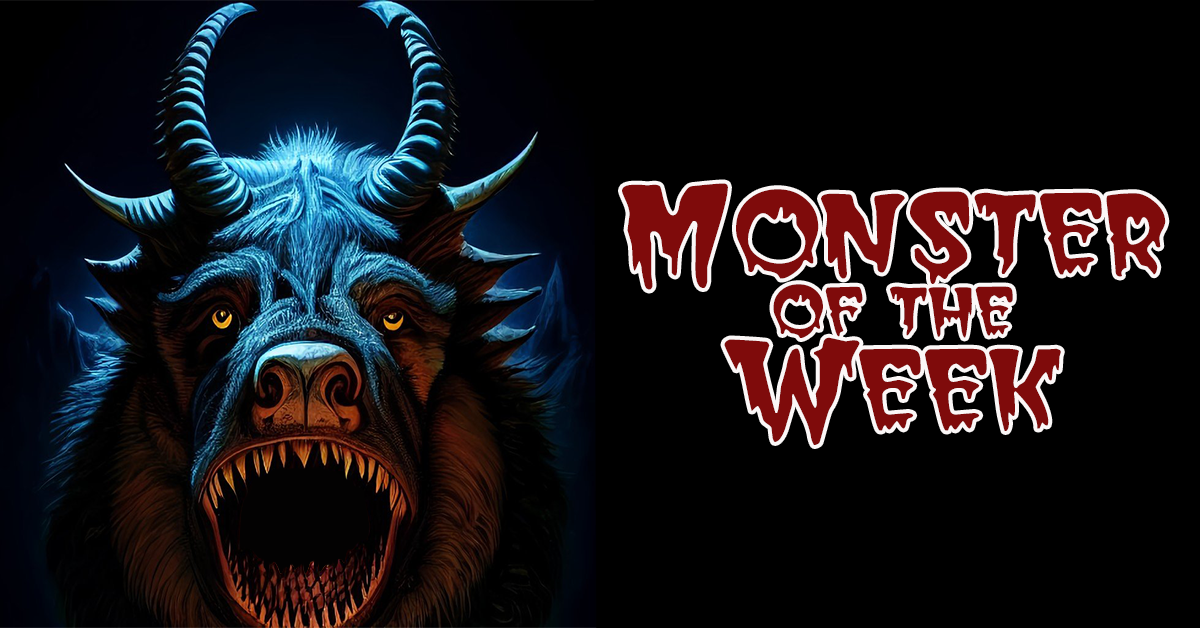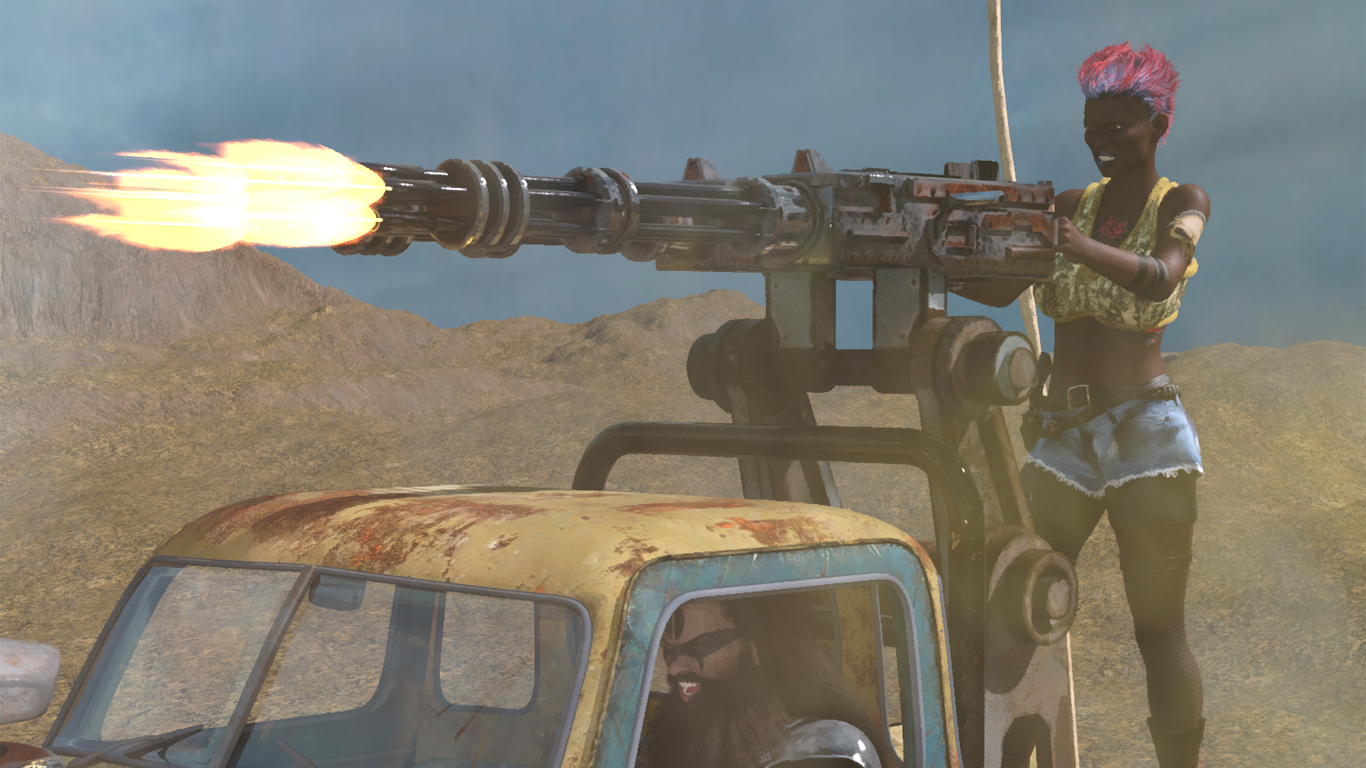We may earn money or products from the companies mentioned in this post.
Editor’s Note: This article was originally written in the late 90s or early 2000s, so I’ve cut out an introductory bit that’s no longer relevant, which is why the thing starts a little abruptly. I’ve left the dated references in so you can make fun of how old I am, though.
What follows are the four major stages of game evolution, as I see them. This evolution can be seen not only in individual gaming groups, but in the changes in games on the market over time. Right now, the gaming industry is right on the verge of the final stage. On a microcosmic level, only a few groups ever make it to the final stage. Regardless, I think the final stage is the purest, most perfect style that anyone can hope to achieve. Sort of a gaming Nirvana.
STAGE ONE: HACK n’ SLASH
This is most likely where you started. I know I started here. Basically, this stage consists of killing monsters and taking their treasures. Murder and armed robbery pass for grand, epic adventure. Many gamers eventually grow out of this stage. In fact, more and more folks are able to skip it all together.
Sadly, some of the “old school” gamers, especially former wargamers, never quite break away from the Hack n Slash mentality. Likewise, many of the early RPGs have never really evolved beyond this level, despite repeated efforts by a few good designers. We all know which ones I’m talking about here.
The problem with Hack n Slash games is that you can get the same result playing video games. Why should you bother scheduling time to get together with other people and imagine you’re killing things when you can get the same effect in gory 3-dimensional detail just by hooking up your Sony Playstation? I suspect that many gamers are lost each year because they get bored with the endless combat and accounting typical of Hack n Slash games.
STAGE TWO: PLOT DRIVEN GAMING
In most games, dungeon crawls eventually begin to take on more story elements. There’s a world outside of the big hole in the ground, and some motivation to crawl around in the dark beyond just killing things. Characters become more than just lists of numbers that interact with die rolls and charts. Some characters even begin to show signs of a cohesive personality, and may even experience growth. Game systems and modules begin to suggest ways to deal with non-combat situations. Mystery and politics begin to play a role in the game world. I would place Call of Cthulhu as one of the first games to really evolve to this style, but you should note that this is mainly a wild guess on my part.
All too often, the GM becomes too attached to his plots during this stage of development. The players begin to feel that their characters are just pawns in the GM’s cosmic scheme. In some cases, the GM may as well just write a story about what happens and let the players insert their characters’ dialogue, eliminating the problem of scheduling gaming time. Unhealthy competition begins to rear its ugly head, with the players only staying in the game so that they can “beat the GM” by derailing his plots. Again, many gamers move on to other things. Still others continue playing, but tend to think of all GMs as adversaries, due to bad experiences in earlier Plot Driven Games. Fortunately, a decent percentage of groups make it to Stage Three.
STAGE THREE: CHARACTER DRIVEN GAMING
This is often more a reaction than an evolution. Players who feel railroaded in Plot Driven Games demand that the characters have more control of their own destinies. Games begin to emphasize well-developed characters. Vampire was probably the first game to fully support this style of play (in theory if not in practice). Many groups become comfortable and remain in this stage for quite a while, especially if the GM is able to give the players the illusion of free will.
Usually, however, a breaking point is reached. The GM begins to become so passive that ANY attempt to move along his plotline is open to charges of railroading. Sometimes players will allow outside events to occur, but these game world events only affect the characters if the players see fit. The GM cannot challenge the PCs, since he isn’t allowed to “do anything to the characters” without being accused of removing player free will. Suspension of disbelief becomes harder and harder to maintain. Excitement in play grinds to a halt. Without a coherent plot or challenging situations, the players ultimately start roleplaying even the most boring details of their characters’ everyday lives.
By this point, most players are too involved in gaming to just give it up. Most games ultimately wobble back and forth between stages two and three, as the GM, then the Players, reassert control over the game.
STAGE FOUR: GAMING FOR GROWNUPS
As I noted, groups rarely make it to this stage. I’ve only seen it happen in a few games (and these were exclusively one-shots or short campaigns), but it is possible. In this stage, the GM and players work together to create a fun, interesting story. QAGS is aimed at this style of play, but only time will tell whether or not it succeeds.
In this stage, like in the Character Driven Game, players have free will. They can follow whatever plotlines they desire. The GM will present plots to them, but they can also pursue character-related plots of their own creation. Likewise, the universe has free will. The game world marches on, with or without the characters. The characters can affect or stop these events but are not required to do so. However, the GM and Players realize that the characters do not exist in a void. The villains don’t stop their attempts to take over the world just because the characters are ignoring them. And if there’s no one else to stop them, the characters may be forced to live in a world ruled by the bad guys. The outside world and the characters do not rely on one another, but they do affect one another. The world is consistent and suspension of disbelief is nicely maintained.
This final stage is, in my opinion, the best style of roleplaying. In order to make this style of play work, the players and GM have to have similar ideas about what the game is about. Most of all, they must trust one another to do everything in the best interest of both the characters and the story. This kind of trust is not easy to achieve, much less maintain, but it pays off when stage four is reached. Of course, unless you’ve achieved this style of play for yourself, you’ll just have to trust me.





